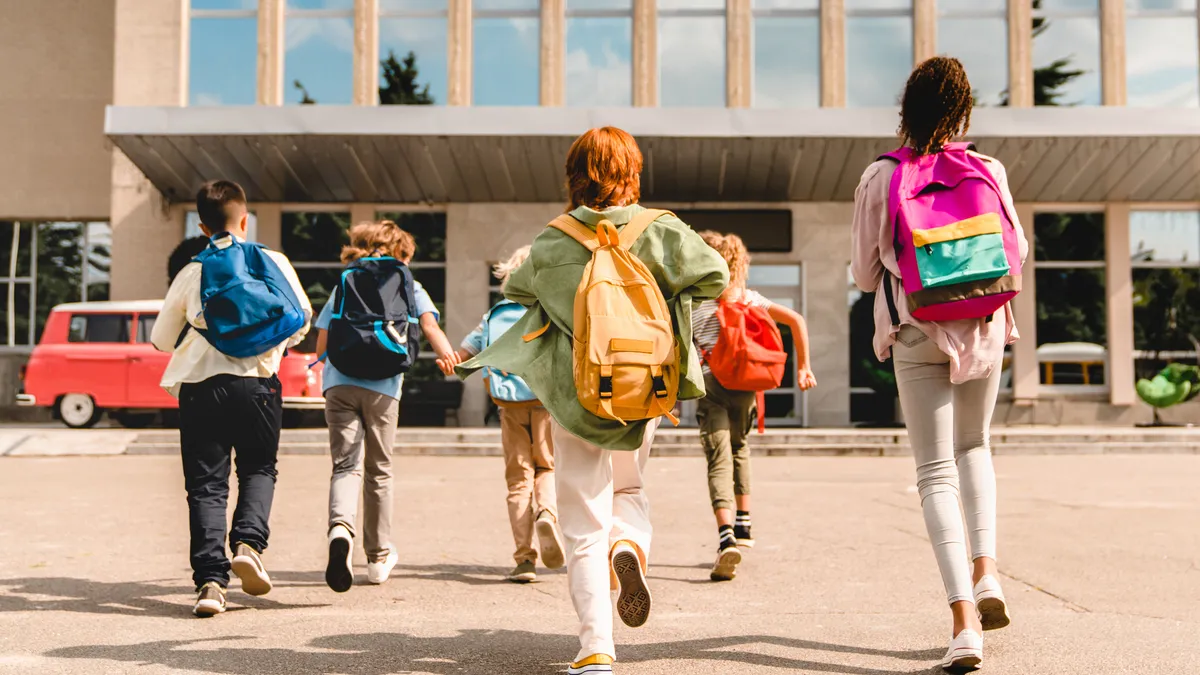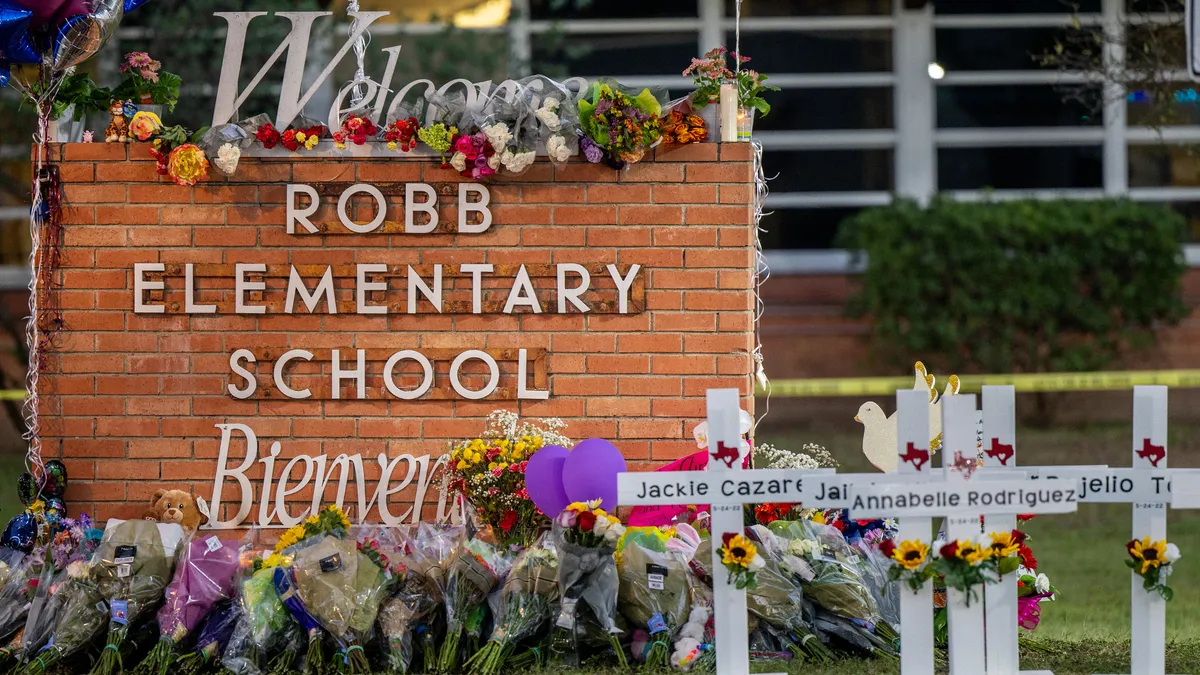Flipped classrooms require educators to reconstruct traditional classrooms by sending lectures home and providing more face-to-face time at school, but elementary- through university-level instructors are finding good reasons to try them out.
Frequently traced back to Colorado teachers Aaron Sams and Jonathan Bergmann, who were quick to experiment with posting videos online in 2008, the flipped classroom concept is small, simple and has shown positive results. The general idea is that students work at their own pace, receiving lectures at home via online video or podcasts and then devoting class time to more in-depth discussion and traditional “homework.”
Here are 16 examples of flipped learning at all levels nationwide and abroad:
1. PRE-AP GEOMETRY
Where: Clear Brook High School, Harris County, Texas
At the beginning of the school year, geometry teacher Leticia Allred told her Pre-AP Geometry class at Texas’ Clear Brook High School that their only homework would be watching 15-minute YouTube videos and taking notes. The videos, made by Allred and fellow geometry teacher Mandy Shrader replace class lectures, which students like 14-year-old freshman Alyssa Bell say were easy to miss information in due to chatter among other students. Learning topics such as triangle classification or using slope to identify lines at home, the students are able to use class time to practice what they’ve learned with traditional schoolwork—but with their teachers freed up for additional one-on-one time. Shrader says 81% of students passed the first test—up 20% from last year.
2. EUROPEAN HISTORY
Where: Wausau West High School, Wasau, Wis.
Patrick Galligan, a teacher at Wasau West High School in Wisconsin, spent the summer converting his AP European history class to a flipped course. Now, students like Andrew Wolfe can review lessons anytime, anywhere on their personal computers and smart phones, reserving class time for in-depth discussions or class projects. Galligan is also urging students to use the educational program Edmodo to form online discussion groups and to watch other lectures like TEDTalks when applicable.
3. AP CALCULUS
Where: Bullis School, Potomac, Md.
First, Bullis School AP calculus teacher Stacey Roshan sensed the stress some of her students felt with the subject. Then, she discovered Camtasia screencasting software at the Building Learning Communities Conference. Now capable of easily recording her screen and audio and sharing these videos with her students, Roshan decided to flip her class. At the end of the first year, 78% of her students scored a “4” or “5” on their AP exam—up from 58% the previous year—and none scored below “3.” The results were so impressive, her mother, Wendy Roshan, an AP Calculus teacher at Virginia’s Madeira School, adopted the format for her own class.
4. "TEACHING TEACHERS"
Where: Amherst Middle School, Amherst, N.Y.
After noticing that staff development days were being used primarily for sessions covering Common Core State Standards, performance review and teacher evaluation systems, Amherst Middle School technology teacher and trainer Rob Zdrojewski came up with a solution. Using screencasting technology, Zdrojewski asked his students to make 90-second instructional videos for their teachers on how to use technology like Gmail and Google Drive. The student productions—titled “Tech Under 90 Sec” or “Teaching the Teachers”—are posted on Zdrojewski’s blog and take students’ work beyond the typical homework assignment.
5. "FAUX-FLIPPED" FOURTH GRADE
Where: Gulf Highlands Elementary School, Port Richey, Fla.
At Florida’s Gulf Highlands Elementary School, students in teacher Tracey Gillies’ fourth-grade class work at their own pace, taking quizzes and watching instructional videos on classroom computers—what Gillies refers to as “faux-flipped.” The teacher moves throughout the room to support the students, and if they’re struggling, she’ll lead them to a carpeted area of the class for discussion. Gillies previously saw the concept work at Lake Myrtle Elementary and decided to test it on a full class when she came to Gulf Highlands last year
6. DIGITAL MEDIA DESIGN AND CRITICISM
Where: New Technology High School, Sacramento, Calif.
At California’s New Technology High School, the flipped model was a perfect match for Digital Media Design and Criticism teacher Dr. James Brown. Schools in the New Tech Network have included “blended learning” since their establishment in 1996, and “technology immersed education is Brown’s specialty. As he explains, flipped learning is less about when students learn and more about how they learn. Using the learning management system Echo, students at Napa New Tech High are able to access course content, collaborate and stay connected with the teacher.
7. GROUP LEARNING AND EXPLORATION
Where: Burford Elementary School, Burford, Ontario, Canada
Grade 6 teacher Rick McCleary says flipped learning has turned around the way he teaches his class at Burford Elementary School in California. After introducing an idea, McCleary lets students explore it a bit before explaining and sending them to do more research on their computers. His students work in groups of four or five and help one another if someone gets stuck, with information working its way through the room organically when one student learns a concept or computer trick.
8. GOVERNMENT ECONOMICS AND AP U.S. HISTORY
Where: Sam Barlow High School, Gresham, Ore.
Oregon’s 2012 Social Studies Teacher of the Year Andrew Pate has created over 50 YouTube videos and 70 podcasts for students in his Sam Barlow High School Government Economics and AP U.S. History classes to watch and listen to outside of class. These materials supplement their textbooks and allow Pate to engage his students in dynamic in-class discussions on what they’ve learned at home. The school’s former assistant principal, David Atherton, recommended Pate for the teaching award and says his success and pass rates increase every year.
9. SIXTH-GRADE MATH
Where: Becker Middle School, Becker, Minn.
Students at Becker Middle School in Minnesota have access to 160 iPods and 150 iPads, additionally using learning network Edmodo to do assignments, solve problems and complete online quizzes. Additionally, parents are able to monitor student progress through the network, and communications are monitored by parents and teachers. Sandy Forster’s sixth-grade math class is one of the first in the school to be totally flipped, and Media Specialist Holly Pringle says the technology has led to a 20% gain in test results between fifth- and sixth-graders overall.
10. MOODLE ALTERNATIVES
Where: Natomas Charter School, Sacramento, Calif.
Students at California’s Natomas Charter School whose needs aren’t met in a traditional classroom can now enroll in the school’s Virtual Learning Academy. The academy uses Moodle.org to deliver assignments to students on a weekly basis electronically in an interactive online classroom. Students meet with their academic coach every two weeks to look at grades and address areas where they need help, and are required to com to campus on Tuesdays and Thursdays for workshops.
11. STANFORD UNIVERSITY SCHOOL OF MEDICINE
Where: Stanford University, Stanford, Calif.
Flipped learning isn’t exclusive to K-12 students. Stanford’s School of Medicine has recently adopted the approach as part of the Stanford Medical Interactive Learning Initiatives. Charles Prober, the senior associate dean for medical education, says the two biggest changes resulting from the method are the manner in which content is delivered (outside of class) and the way students spend time in the classroom (putting principles into practice). Feedback from students has conveyed that the style is more dynamic and motivational than traditional, passive teaching.
12. "THE SCIENCE OF EVERYDAY THINKING"
Where: University of Queensland, Brisbane, Queensland, Australia
At the University of Queensland in Australia, Dr. Jason Tangen, a psychology professor, has received a Faculty of Social and Behavioural Sciences Teaching Excellence Award for his approach, which includes flipped learning. Setting out to change the focus from “teaching” to “learning,” he developed a new course called “The Science of Everyday Thinking” where his online lectures are the homework. This left class time for everything from discussion to analytical thinking challenges and created what Tangen says is “an interactive and personal experience.”
13. HISTORY
Where: Forestwood Middle School, Flower Mound, Tex.
After noticing that they were losing half their classes during lectures, Forestwood Middle School teachers Cristi Derow and Jennifer Bradley threw out their lectures and flipped the history class they co-teach. Once passive listeners, their students are now actively engaged and Bradley says she has seen a 15-20% increase in test scores. Several Texas districts are currently experimenting with the flipped model.
14. MATH
Where: Reidy Creek School, Escondido, Calif.
Many teachers in the San Diego area, like Jo-Ann Fox of Escondido’s Reidy Creek School, learned about flipped classrooms at the International Society for Technology in Education convention in San Diego earlier this year. Fox now uses a flipped classroom to teach her fourth-graders math this semester. Listening to recorded talks at home, the students use class to practice the skills they’ve learned, like using coins to solve math problems.
15. MULTIPLE FRESHMAN SUBJECTS
Where: Clintondale High School, Clintondale, Mich.
At Michigan’s Clintondale High School, flipped curriculum has been adopted school-wide. The school first tested the model with 140 freshman students in 2010, and says it reduced the failure rate significantly (19-33%) across all major subjects in one semester. Media including CNN, Harvard Education Publishing Group, and the Center for Digital Education (formerly Converge Magazine) have covered the school’s success.
16. CHEMISTRY
Where: Westside High School, Augusta, Ga.
Schools in high-poverty areas—like Westside High School in Georgia, where over 85% of students are minorities and 78% qualify for free or reduced-price lunch—have been able to flip classrooms with the help of federal grants. Westside chemistry teacher Jennifer Douglass reports a modest increase on final exam scores in her regular chemistry class, and some students say they are no longer bored in class.
Would you like to see more education news like this in your inbox on a daily basis? Subscribe to our Education Dive email newsletter! You may also want to read Education Dive's list of 10 ed tech edupreneurs who made waves in education in 2012.









 Dive Awards
Dive Awards








